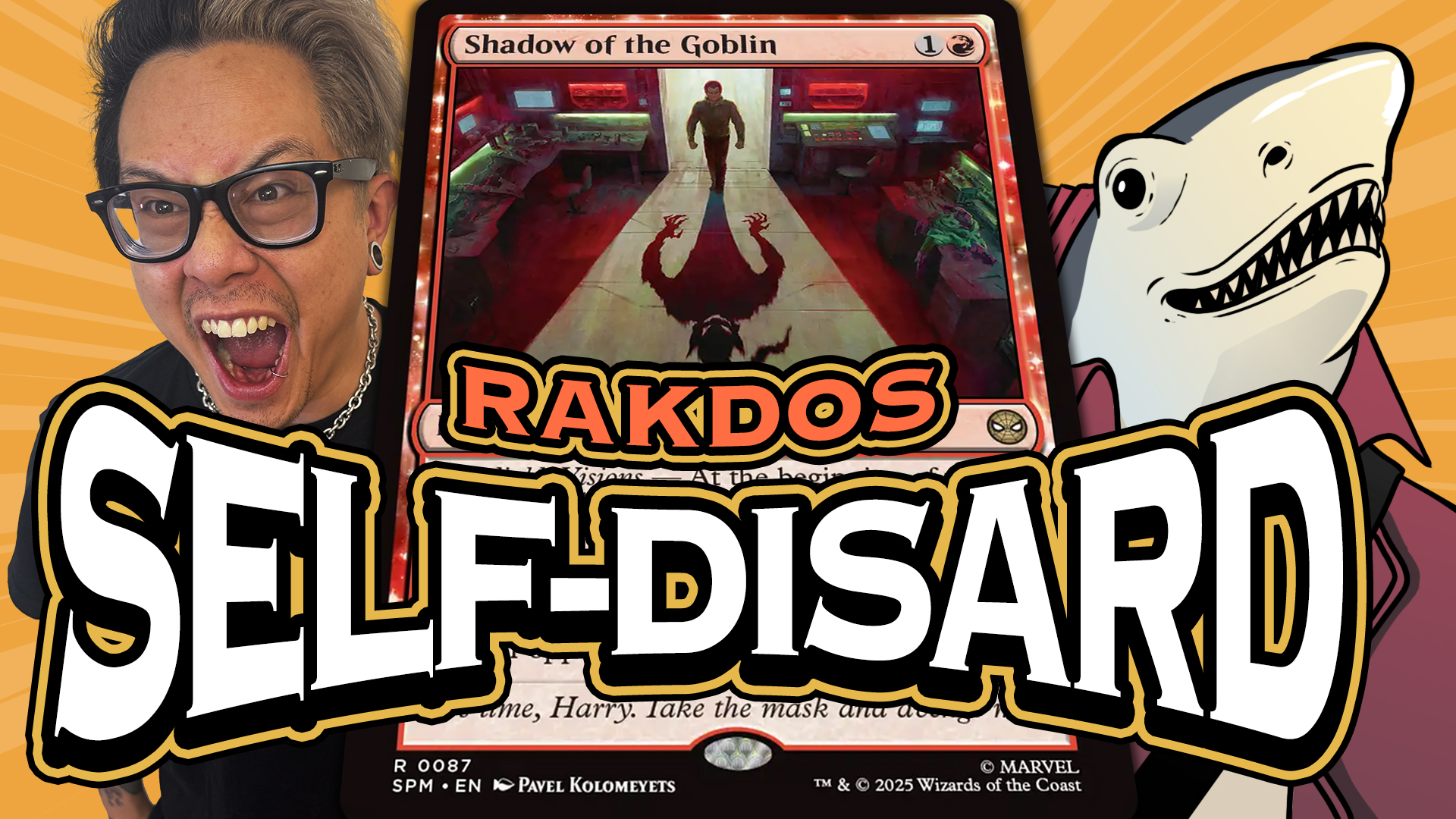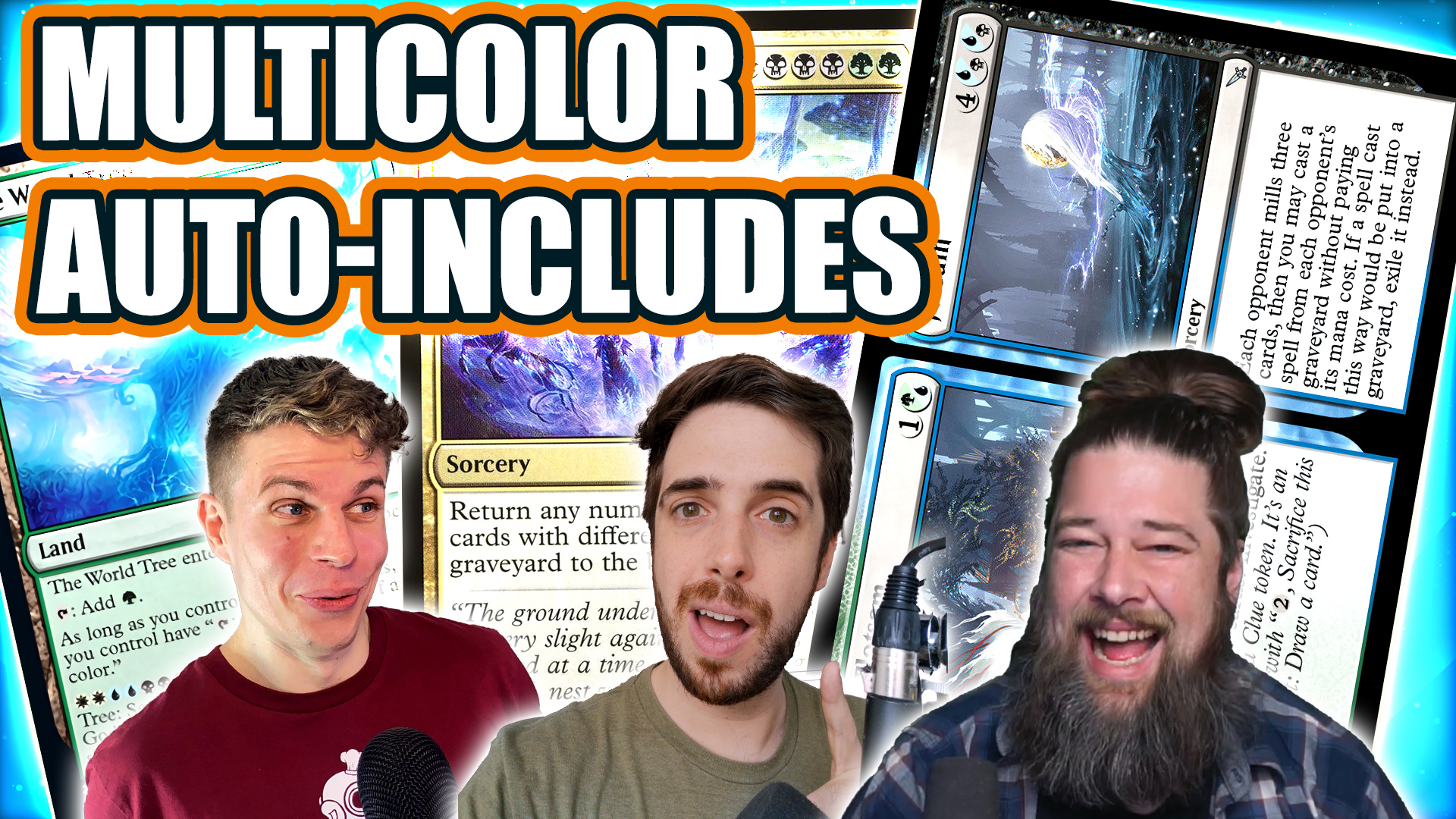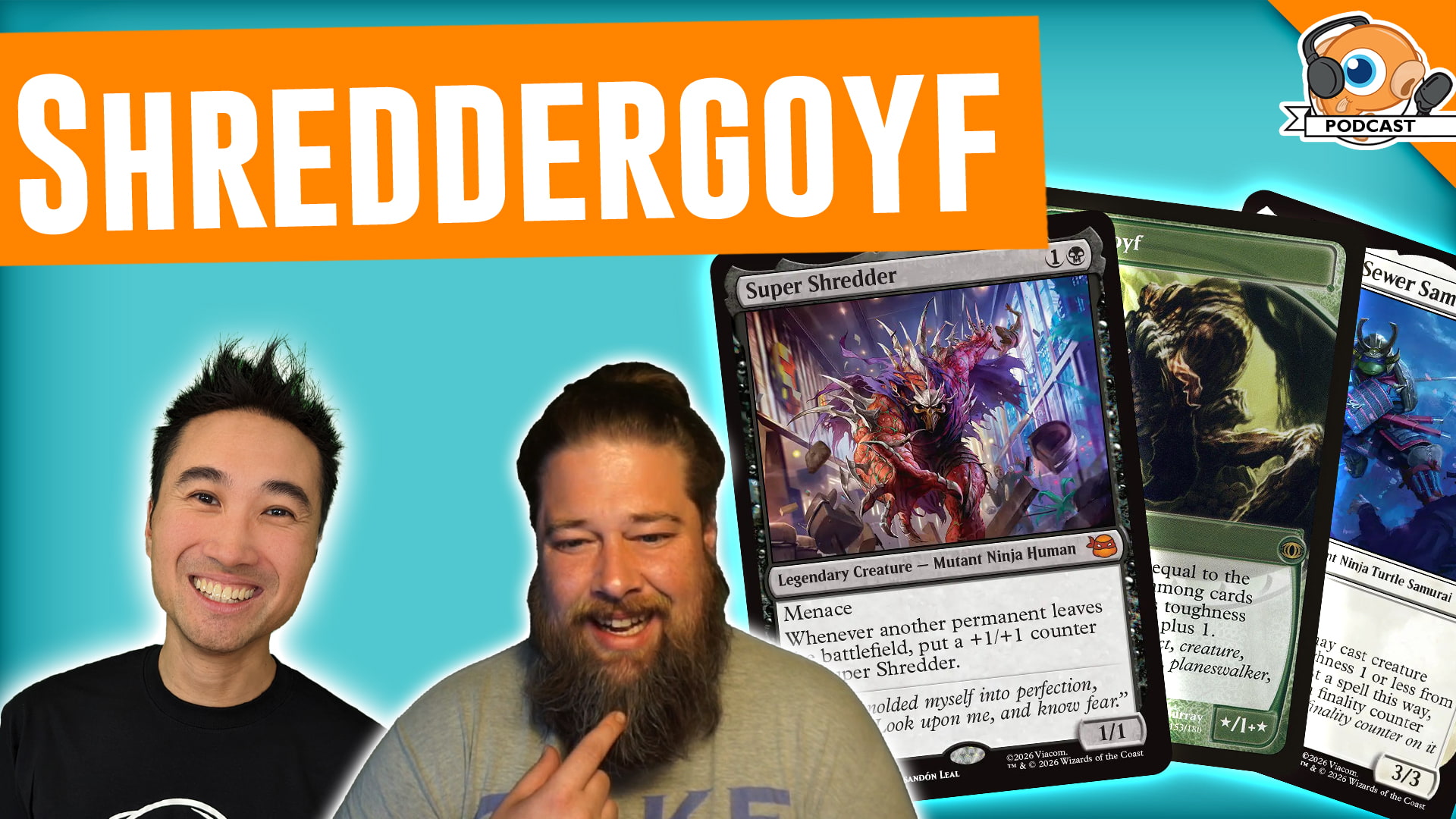Vintage 101: A Bazaar Story

No, this is not an Eldrazi.
This past weekend was Pro Tour Oath of the Gatewatch. I'm told there was a large football game as well, so it must be a busy weekend for many folks. Although the weekend was full of professional card players and pro football players, the real stars of the weekend were the Eldrazi. These monsters and their associated decks and busted lands were seemingly unstoppable. Even as a Vintage player I was impressed with what I heard about these Modern Eldrazi decks. Vintage 101 isn't a Modern format article series though, so today we'll be talking about a different set of monsters that break the fundamental rules of the game we love so much. Today the topic is undead monsters from beyond the grave. Ghoulish creatures like this fellow here:

The Bizarre Bazaar
Vintage has more broken interactions centered on the graveyard than any other format. Vintage allows players to compete with the full four copies of the greatest discard outlet ever printed, Bazaar of Baghdad. Bazaar is a bit of an oddball because it is a land that doesn't produce mana, something Wizards's R&D doesn't do very often anymore. Originally printed in Arabian Nights, Bazaar was overshadowed by another card-drawing land from the set, Library of Alexandria.

The concept of card advantage was understood early in Magic's formative years. Using this theory as a basis for playability, Library of Alexandria was considered superior to Bazaar of Baghdad. The two cards that Bazaar lets you draw weren't enough to mitigate the downside of discarding three cards. For a long time this drawback meant that Bazaar wasn't very good. There were some decks that could take advantage of the discard on Bazaar to reanimate creatures. Worldgorger Dragon combo decks were a notable example. Creature reanimation was a good enough reason to use Bazaar, but it took until Ravnica to unleash a group of cards that made Bazaar of Baghdad into all upside.
Golgari Gold Mine
Ravnica: City of Guilds introduced the Golgari guild to Magic and their keyword ability, Dredge. A card with Dredge could be "drawn" from the graveyard by replacing a normal card drawn with a fixed number of cards from the top of your deck into your graveyard. Each card with Dredge would be templated with the word "Dredge" followed by a numerical value indicating the number of cards milled to return it from your graveyard to your hand. In the context of a normal game, Dredge didn't seem unfair. The idea was that you'd be able to reuse those cards to gain a strategic advantage. Similar things had been tried before with Buyback and Flashback, both of which seemed more powerful at first glance. As it turns out, Dredge is a broken mechanic.



Graveyard-centric decks filled with cards like Ashen Ghoul and Nether Shadow had been around for some time when the Dredge keyword entered the Magic lexicon. Adding cards with this ability simply added to the power level of these decks and made them viable in a tournament environment. The ability to mill through large portions of your deck quickly and in a controlled fashion created a perfect storm of degeneracy.
Decks like "Friggorid" in Extended and "Manaless Ichorid" in Vintage were a force to be reckoned with. Even in a format like Vintage, where decks were extremely fast, an Ichorid deck powered by Bazaar of Baghdad and Golgari Grave-Troll could hold its own. Still, the best was yet to come for the Vintage graveyard decks.

Seeing the Future
Time Spiral block had a few cards that were perfect for Dredge. Dread Return was used in the old Manaless Ichorid decks to great effect. Dredging a Dread Return gave the Ichorid decks a way to reanimate a creature without spending mana. Probably the biggest thing to happen to this family of graveyard decks came with the release of Future Sight. There were many odd cards in that set, including the only enchantment I'm aware of that does nothing if you actually cast it.

Bridge from Below is a strange card, and it takes a very specific type of deck to get any use from it. The card only works if it's in the graveyard. The mana cost is irrelevant to a Dredge player. Once this beauty is in the graveyard, any time one of your creatures dies you get a 2/2 Zombie token. That may sound innocuous, but it quickly snowballs out of control.
Once Bridge was played in the Dredge deck, cards the deck was already playing like Cabal Therapy and Dread Return started to create massive advantages. Using Bazaar and the deck's Dredgers, the graveyard was rapidly filled with multiple copies of Bridge from Below. Casting a Cabal Therapy with flashback might add one to four Zombie tokens to the board. Once you hit your opponent's Force of Will with Cabal Therapy, they were defenseless against your follow-up Dread Return. A prime Dread Return target for Dredge players was Flame-Kin Zealot. "FKZ" pumps up your horde of Zombies, giving them +1/+1 and haste. That's a nice little combo-kill right there.
Although Bridge was one of the flashiest cards to come out of Future Sight, the set also included Narcomoeba and Dakmor Salvage. Salvage is the only land with Dredge, so it has utility in Dredge decks. Narcomoeba is just a 1/1 flier for two mana, but you can put it into play for free if it goes to the graveyard from your library. With all of the Dredging going on, Narcomoeba provides a lot of value. It's another point of free card advantage and fuels Dread Return and Cabal Therapy.
Beyond Bridges
Once Dredge decks had access to Bridge from Below, they started to look much like they do today. Still, many subsequent printings have seen various incarnations of Dredge.
Alara block had the Unearth mechanic which allowed creatures to be returned from the graveyard with haste. Fatestitcher is one card with unearth that has seen play in Dredge decks. In a Dredge deck each activation of Bazaar of Baghdad can put as many as 12 cards from your library to your graveyard. Fatestitcher can be unearthed to get a second activation out of the same Bazaar, dredging the deck ever closer to the perfect mix of cards in the graveyard.
Zendikar gave Dredge Bloodghast, which is amazing in Vintage Dredge. One landfall trigger can return multiple Bloodghasts to the battlefield, providing an attacking body and fuel for flashback spells. Bloodghast is also Black, which enables it to bring back an Ichorid.
Khans block introduced the Dragon Lords to Magic. Many of the top Dredge players I know have adopted Dragonlord Kolaghan in place of Flame-Kin Zealot. Kolaghan grants all of your Zombies haste and his six power often ends up adding as much power to your board as one Zealot. More importantly, in games where you're light on Zombie tokens, Dragonlord Kolaghan makes a better reanimation target.



Having evolved from "Manaless Ichorid" to what we now know as Dredge, the Bazaar-based graveyard deck became strong enough to be a world-class contender. In 2011 Mark Hornung took a Dredge deck powered by Sun Titan and Fatestitcher to the Vintage Championship.

Nothing does more to prove a deck is a top-tier contender than winning the Vintage championship. Mark Hornung became the first and only player to take first place with Dredge, although several others have made Top Eight with the deck at Champs in other years. Last year Dredge won the NYSE tournament and placed in the Top Eight of the Vintage Championship in the hands of Sullivan Brophy. All of the evidence points to the fact that Dredge is a deck to be taken seriously. To enter an event without having a solid plan for the Dredge matchup is a recipe for disaster.
Transformers
With Dredge being such a strong deck, Vintage players are forced to include very powerful anti-graveyard cards in their sideboard. These countermeasures range from Grafdigger's Cage and Containment Priest to even deadlier cards like Leyline of the Void. Since graveyard hate is so prevalent and so disruptive to the Dredge deck's game plan, some folks have opted for a different approach to winning sideboarded games.

Here we have "Pitch Dredge," a deck so named due to the inclusion of Force of Will and other "free" Counterspells. Other than the increased number of blue cards and the suite of counters, the main difference with the deck is the transformational sideboard.
The sideboard in this version of Dredge contains the Marit Lage combo. This combo gives the deck a win condition that doesn't rely on the graveyard at all. The idea is that the Dark Depths combo makes sideboarding very difficult for opponents.
The Most Polarizing Deck in Vintage
Every format in Magic includes decks that some segment of the community hates. In Standard the format rotates and hated decks are forgotten quickly. In Modern some people can't stand the Burn decks, and people often criticize the deck as being overly simple to play.
Vintage has a few decks that some people love to hate. Mishra's Workshop decks are loved by their pilots almost as much as other people dislike them. Still, for as much flak Workshop decks get in the Vintage community, it is nothing compared to the polarized opinions of Dredge. Many people dislike playing against the deck, and since Dredge decks often do not contain cards from the Power Nine, people sometimes think of the deck derisively as a "budget option" in comparison to other dominant decks.
I think it's important to look at the situation surrounding the perception of Dredge in a different light. The real reason people dislike the deck is that it is very good at giving them a savage beating with Zombies. I've been on both ends of this exchange, and my recent experience playing Dredge has gave me a new perspective and respect for the archetype. The truth is that Dredge is almost as fast as the fast combo decks of the format. I've seen my share of turn-two kills with Dredge, and kills on turns three or four happen all the time. The nature of how the Dredge engine works, and the inclusion of four Bazaars and four Serum Powders give the deck an almost unheard of lever of consistency. With some combo decks you might see that the deck is poised for an early victory, then gets disrupted for one counterspell and fizzles. With Dredge the deck is so resilent and hard to disrupt through normal means that opponents know in their gut that game one is going to end badly for them. This "feel bad moment" taints the perception of the deck, and that is what leads to people's negative opinions.
A common complaint that people have about decks they dislike is that the deck is too easy to play. Modern Burn and Vintage Workshops get this kind of silly rhetoric directed at them all the time. I think Dredge gets it even worse. The truth is that yes, the first game of a match is often very easy for the Dredge pilot, but only because common counter-tactics simply do not stop it. The skill in being a Dredge player comes when you're forced to win through cards like Rest in Peace and Ravenous Trap. I've played against very skilled Dredge players who make beating these sideboard cards look easy, and I've experienced firsthand how hard it actually can be.
I hope that the perception of Dredge amongst the player base improves because a healthy format includes many different types of decks. Having many viable and robust archetypes leads to a more interesting format. I also want Dredge to be treated with respect because it is more accessible to the average player than other decks. Because the deck doesn't include the Power Nine, it is far cheaper than other Vintage decks. I like the idea of more people being able to compete and win because there is a deck they can afford.
If you're someone who is interested in playing Vintage on Magic Online and you haven't bought into a deck due to cost, just know that even a two-hundred dollar budget Dredge deck can win you tournaments if you put in the work to become skilled with the deck.
Feedback
I've posted questions on Twitter about what kind of things people would like to see in upcoming articles, and I've gotten a good amount of responses. Information from social media and comments on my articles help inform me of what people like best, so keep the feedback coming! I usually respond to people in a timely matter, so feel free to hit me up with any burning questions you may have.
I'll see you in seven days! You can follow me on Twitter @josephfiorinijr - Islandswamp on MTGO













